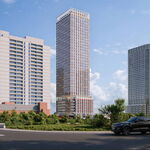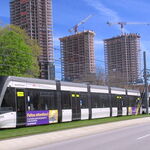kEiThZ
Superstar
^There’s nothing that a DMU hub in Kingston can achieve that a Charger layover hub in Kingston can’t. A Kingston hub should be premised on differing volumes of ridership on each of the three directional legs, and on the need for overnight layover to enable late arrivals into and early morning departures from Kingston. Timekeeping and schedule adherence should not be a consideration.....if we can’t solve that......
The volume differences are not well served by through trains alone, because doing so would require empty seats (or empty coaches, in the extreme) for too much of the run....poor equipment utilization. DMU or short Charger trainsets turning at Kingston can take up the slack. I can envisage VIA easily filling 2 coaches a day minimum with early morning Ottawa commuters, and likewise and more westward towards Toronto. So those early morning runs might well grow beyond DMU size.
Depends how we're defining optimal demand for DMUs. Is it to fill 2 cars or 3 cars? Kingston, to my amateur eyes, looks a lot like the smaller European cities which get regular DMU service. Hence, why I think DMUs would work there. Especially off-peak where demand is bound to be substantially lower. But I guess there are cost tradeoffs with fleet commonality that might justify using Chargers to push around 2-3 car trains, even if substantially emptier off-peak.
West of Toronto, I can see HFR leading to a service plan where the hourly trains arriving from the east run through, alternating between the two current routes. That puts London on effectively an hourly service, and 2-hourly headways for both Kitchener and Brantford...
I don't think there's a good case to split service west of Toronto. Pearson needs hourly service from both directions. And GO can serve Hamilton and GTA West really well. They'd be only folks transferring. I imagine that HFR simply becomes a cheaper version of the proposed Ontario HSR routed Toronto-Pearson-Kitchener-London.





/https://www.therecord.com/content/dam/therecord/news/waterloo-region/2016/03/04/via-rail-calls-on-old-trains-for-new-service-to-kitchener/B822388087Z.1_20160304173406_000_GDU1L089D.2_Gallery.jpg)